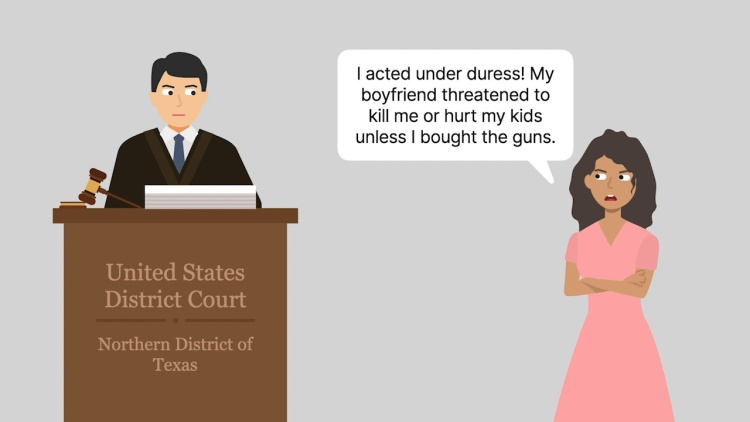Dixon v. United States
United States Supreme Court
548 U.S. 1, 126 S. Ct. 2437, 165 L. Ed. 2d 299 (2006)
- Written by Jamie Milne, JD
Facts
Keshia Dixon (defendant) attended two gun shows and purchased multiple firearms. In acquiring the guns, Dixon provided incorrect address information and lied about being under indictment for a felony. Dixon was convicted of (1) receiving a firearm while under indictment for a felony under 18 U.S.C. § 922(n) and (2) making false statements to obtain a firearm under 18 U.S.C. § 922(a)(6). At trial, Dixon admitted that she knowingly provided false information concerning her address and indictment status. Dixon also admitted that she knew lying about her indictment status was a crime. Dixon raised the defense of duress, claiming that her boyfriend threatened to kill Dixon or harm her children if she did not acquire the guns for him. The court of appeals affirmed Dixon’s convictions. Dixon appealed to the United States Supreme Court on the ground that the trial court erred by placing the burden on Dixon to prove duress by a preponderance of the evidence. According to Dixon, once the defense of duress is raised, the government bears the burden of proving beyond a reasonable doubt that the defendant was not acting under duress. The United States Supreme Court granted certiorari.
Rule of Law
Issue
Holding and Reasoning (Stevens, J.)
Concurrence (Kennedy, J.)
Concurrence (Alito, J.)
Dissent (Breyer, J.)
What to do next…
Here's why 899,000 law students have relied on our case briefs:
- Written by law professors and practitioners, not other law students. 47,000 briefs, keyed to 994 casebooks. Top-notch customer support.
- The right amount of information, includes the facts, issues, rule of law, holding and reasoning, and any concurrences and dissents.
- Access in your classes, works on your mobile and tablet. Massive library of related video lessons and high quality multiple-choice questions.
- Easy to use, uniform format for every case brief. Written in plain English, not in legalese. Our briefs summarize and simplify; they don’t just repeat the court’s language.







